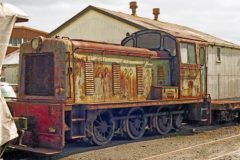Famous transatlantic Queens
Posted by Chris Graham on 22nd December 2021
Cunard Line’s famous transatlantic Queens have fascinating histories, now recounted by QM2 designer Stephen Payne in a new book.
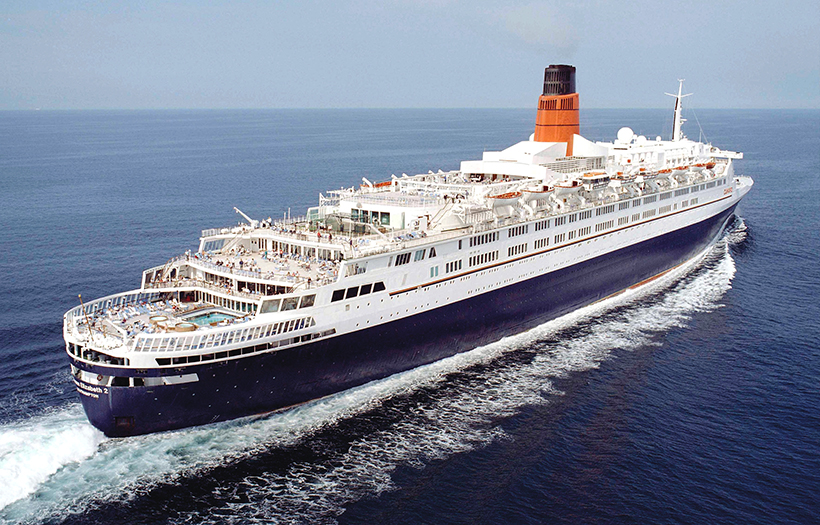
Famous transatlantic Queens: Possibly Cunard’s most famous liner, Queen Elizabeth 2, entered service in 1969 and looked good from every angle. (Pic: Michael Gallagher Collection)
Cunard Line has operated a series of famous transatlantic liners, with the famous ‘Queens’, from Queen Mary of 1936 to Queen Mary 2 of 2004, becoming well known throughout the world. Cunard owes its origin to the mail contract which it was awarded by the British Government through the Admiralty in 1838, since when it has been operating liners to take passengers and cargo across the Atlantic.
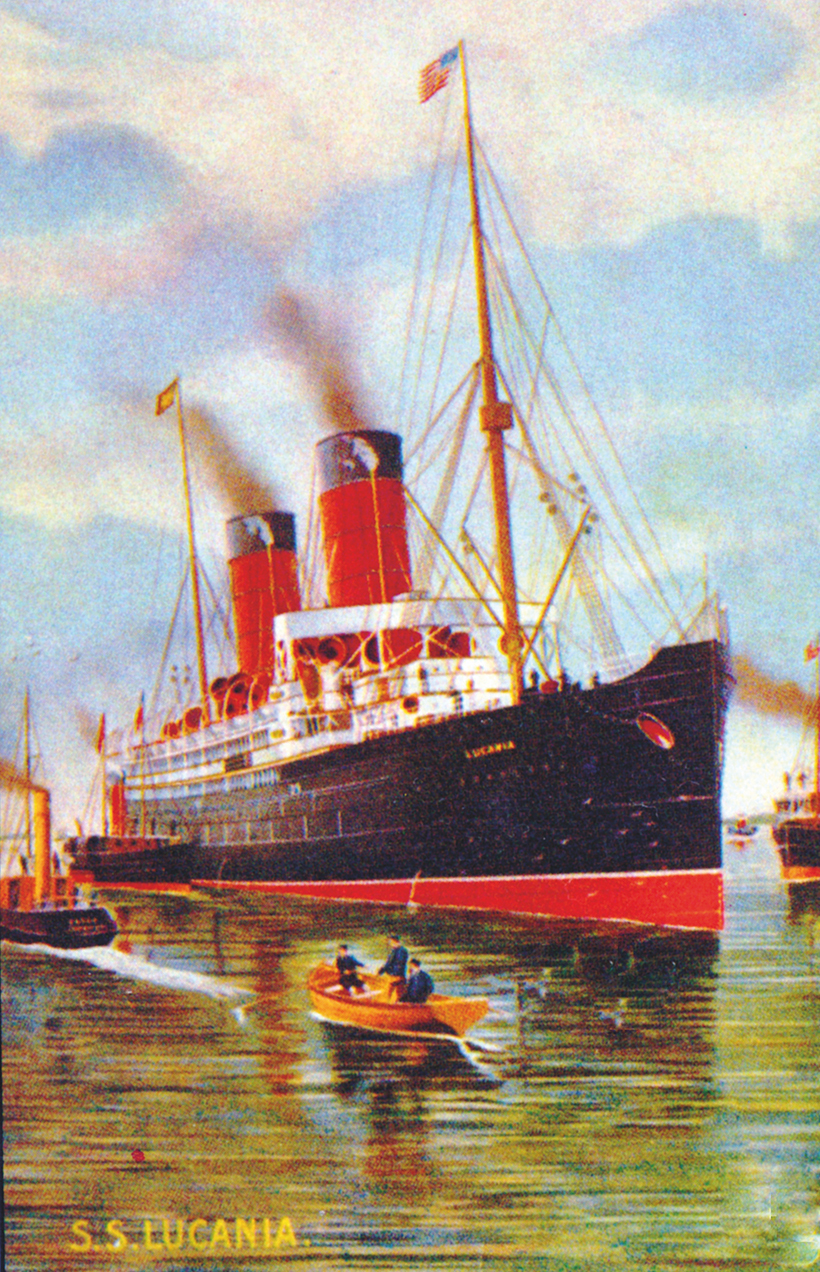
Lucania entered Cunard service in 1894, and she and Campania each held the Blue Riband eastbound and westbound records in turn. The 12,950gt ship was driven by two, five-cylinder triple-expansion engines developing 30,000shp, which gave her a service speed of 21 knots.
When the diminutive paddle steamer Britannia left Liverpool on 4 July 1840, bound for Halifax and Boston with a mail contract securing her employment on the route, the future for Cunard was bright, and for many years the line dominated the transatlantic route. However, several times the future of the enterprise looked less than secure as it fell behind the competition in terms of the size, speed and passenger offerings on its ships. Nonetheless, Cunard strived to advance and invested in new tonnage, such as Lusitania and Mauretania in 1907.

An advance publicity picture of the first Queen, Queen Mary of 1936, issued by Cunard after the ship’s launch. She sailed on her maiden voyage on 27 May 1936 and won the Blue Riband that August.
The Depression of the 1930s left Cunard once again vulnerable, with the company having a massive ship, half-built (the future Queen Mary) but without the funds available to complete her. The solution was to merge with its equally ailing one-time rival White Star Line under a government-brokered deal that included loans to complete the ship and secure funds for a second ship.
The naming of any new ships for the joint venture was problematic: should Cunard adopt its ‘-ia’ ending, or use White Star’s ‘ic’? The solution was neither, with a new naming nomenclature seeing the introduction of the now classic ‘Queen’ naming. This was originally confined to transatlantic liners, notably Queen Mary, Queen Elizabeth, Queen Elizabeth 2 and Queen Mary 2, but following Carnival’s acquisition of Cunard in 1998, all Cunard new-builds have been ‘Queens’.
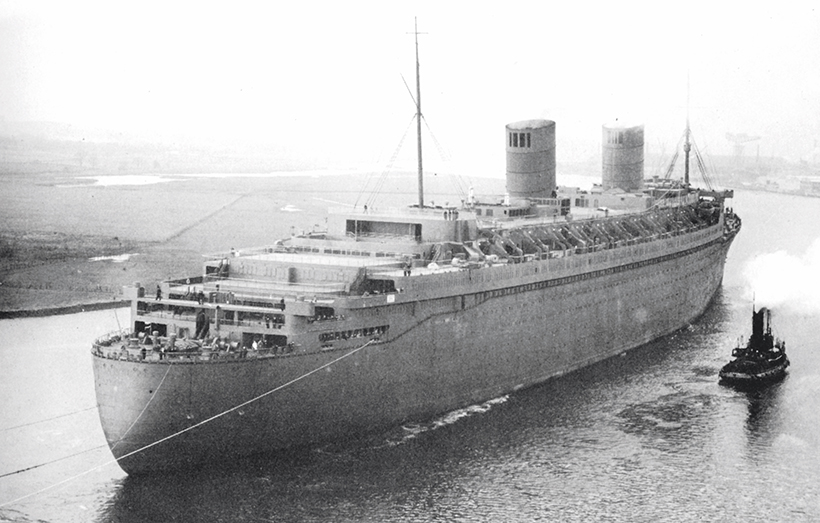
Queen Elizabeth sets off down the Clyde as she leaves John Brown Shipyard, with her next stop being New York. She was launched in September 1938.
The first of Cunard’s classic transatlantic liners was Queen Mary, which sailed from 1936 to 1967, having been built by John Brown & Company at Clydebank. The second Queen, Queen Elizabeth of 1940, played a major role in the wartime effort and went on to have a long career in the post-war era. Queen Mary and Queen Elizabeth were built as part of Cunard’s planned two-ship weekly express service between Southampton, Cherbourg and New York.

Liners on parade: Mauretania, Normandie, Queen Mary and Queen Elizabeth together in New York, in 1940.
They were effectively replaced by the famous Queen Elizabeth 2, which entered service in the late 1960s, sailing on her maiden transatlantic voyage on 2 May 1969. At the time of QE2’s completion, Cunard’s finances were not in the best state, and indeed the company had lost £7.5 million during 1967 while she was under construction. So when she entered service, everything rested on the new Cunarder to save the company. Fortunately, she went on to have a long career both cruising and crossing, and became much loved by those who travelled on her. She is now retired in Dubai where, after much delay and partial reconditioning, part of the ship opened to visitors on 18 April 2018.
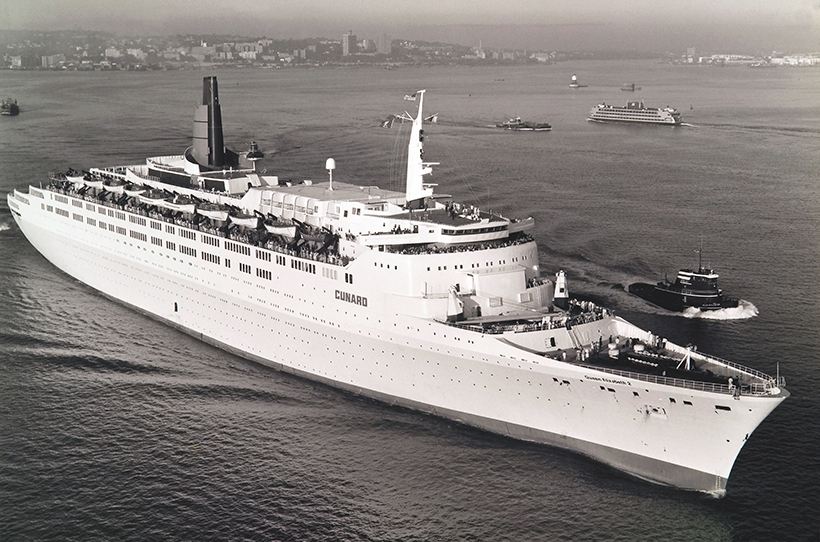
Queen Elizabeth 2 in the UK after her service in the Falklands, wearing a grey livery but with a Cunard red funnel. She was requisitioned by the British government to ferry troops to the South Atlantic in 1982. (Pic: Michael Gallagher Collection)
The most recent of the Line’s famous transatlantic ships is Queen Mary 2, the liner for the 21st century, which was built by Chantiers de l’Atlantique shipyard at St Nazaire in France and entered service in early 2004. Having been named by HM The Queen at Southampton on 8 January 2004, she left Southampton on her maiden voyage on 12 January 2004, heading to Fort Lauderdale. Now, Queen Mary 2 carries the Cunard flag round the world, and is one of a kind, being the only true ocean liner currently in service.
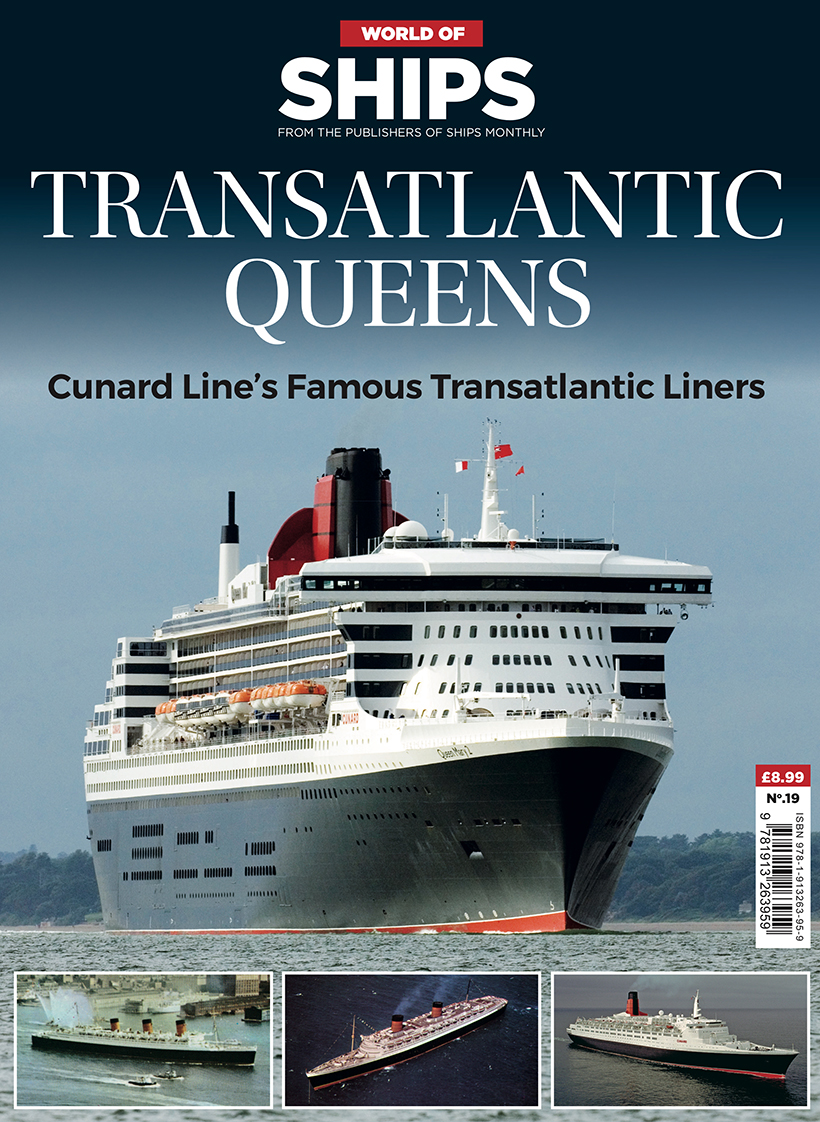
The latest edition of to the World of Ships series tells the story of the Transatlantic Queens, and describes Cunard Line’s transatlantic liners from Queen Mary of 1936 to Queen Mary 2 of 2004. It includes a brief look at two proposed newbuilds, Q3 and Q5, that did not progress past the drawing board.
The well-illustrated 100-page volume begins by examining the role of the mail contract in Cunard’s early years, and goes on to cover the Line’s Edwardian Splendour and the careers of Lusitania, Aquitania, Mauretania and Berengaria. The first Queen, Queen Mary, appeared in 1936, and her design, career and survival at Long Beach is described.
The second Queen, Queen Elizabeth of 1940, played a major role in the wartime effort and went on to have a long career. She was effectively replaced by Queen Elizabeth 2, which entered service in the late 1960s. Both ships are fully covered, with technical details and on-board descriptions, accompanied by a myriad of outstanding photos.
The most recent of the Line’s transatlantic ships is Queen Mary 2, which was designed by the author and entered service in early 2004. As would be expected, thanks to the author’s heavy involvement in the QM2 project, the ship’s history is covered, from its initial conception, to the detailed planning process, through the design and build stages. Queen Mary 2, the Cunard flagship, and is one of a kind, being the only true ocean liner currently in service.
This outstanding book more than does justice to the famous Queens and their transatlantic legacy, having been written by a true liner enthusiast, who knows the subject better than anyone.
To buy your copy of this book, simply click here
For a money-saving subscription to Ships Monthly magazine, simply click here




